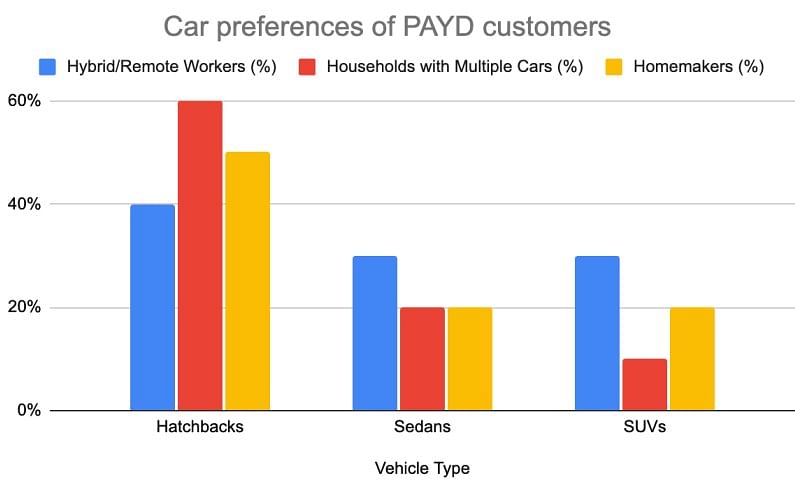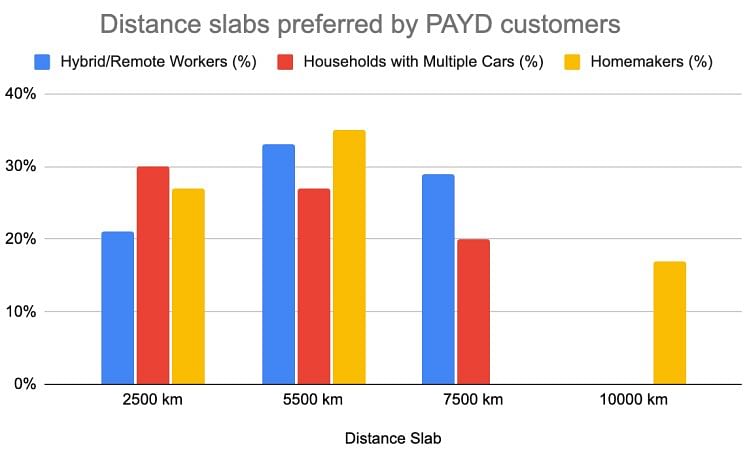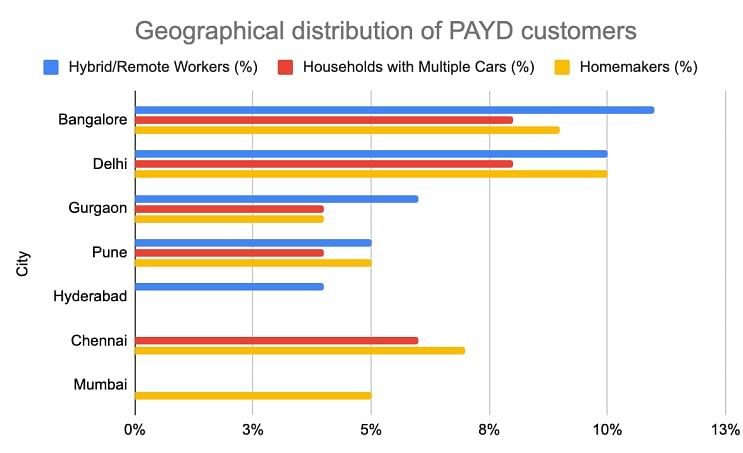Remote workers, homemakers, multi-car owners drive adoption of PAYD insurance
Hybrid and remote workers have emerged as the largest segment of PAYD customers, constituting 35% of the total customer base.
Recent data analysis by Policybazaar has revealed a significant surge in the adoption of Pay As You Drive (PAYD) motor insurance plans, with three key consumer segments leading the charge: remote workers, homemakers, and households with multiple cars.
Remote Workers Embrace Flexible Insurance
Hybrid and remote workers have emerged as the largest segment of PAYD customers, constituting 35% of the total customer base. This group has seen a robust 25% growth in the past year, reflecting the increasing prevalence of flexible work arrangements across industries.
"The shift to remote work has fundamentally changed how people use their vehicles," said a Policybazaar spokesperson. "PAYD plans offer these workers the flexibility to align their insurance costs with their reduced commuting needs."
Remote workers show a preference for moderate to low mileage plans, with 33% opting for the 5,500 km slab and 29% choosing the 7,500 km slab. This trend aligns with the reduced daily commutes typical of remote work arrangements.
Interestingly, this segment shows a balanced preference in vehicle types, with 40% choosing hatchbacks, 30% opting for sedans, and another 30% preferring SUVs. This diverse choice suggests that remote workers value a range of vehicle options to suit their varied needs.

Multi-Car Households: The Fastest Growing Segment
Households with multiple cars represent the fastest-growing segment in the PAYD market, experiencing a remarkable 40% year-over-year growth. This group now accounts for 25% of the total PAYD customer base.
"Families with multiple vehicles are finding significant value in PAYD plans," the spokesperson explained. "These plans allow them to optimize their insurance costs based on the usage of each vehicle."
This segment shows a preference for lower mileage plans, with 30% choosing the 2,500 km slab. This suggests that PAYD plans are particularly attractive for insuring secondary vehicles that see less frequent use.
When it comes to vehicle choices, multi-car households show a strong preference for hatchbacks, with 60% opting for these compact cars. Sedans come in second at 20%, while SUVs account for 10% of their vehicles. This preference for smaller, more efficient cars aligns well with the urban-centric nature of PAYD adoption.
Homemakers: An Unexpected Driver of Growth
Perhaps the most surprising trend is the significant uptake among homemakers. This group now comprises 15% of the PAYD customer base and has seen a 30% growth over the past year.
"The increasing adoption of PAYD plans by homemakers indicates a growing awareness of cost-effective insurance options among this demographic," noted the Policybazaar representative. "It also suggests that insurers are successfully tailoring their products to meet the specific needs of this segment."

Homemakers show a preference for mixed mileage slabs, with 35% choosing the 5,500 km slab and 27% opting for the 2,500 km slab, reflecting a pattern of regular but shorter trips.
In terms of vehicle preferences, homemakers align closely with the overall trend, with 50% choosing hatchbacks, and an equal split of 20% each for sedans and SUVs. This preference for compact vehicles suggests a focus on practicality and ease of use for daily tasks and errands.
Geographic Distribution
The adoption of PAYD plans shows a strong urban focus, with interesting variations across different consumer segments.
For remote workers, Bangalore leads the pack with 11% of PAYD customers, closely followed by Delhi at 10%. Other significant markets include Gurgaon (6%), Pune (5%), and Hyderabad (4%). This distribution aligns with India's major tech and business hubs, where remote work is more prevalent.
Among multi-car households, the distribution is slightly different. Delhi and Bangalore are tied at the top, each accounting for 8% of PAYD customers in this segment. Chennai follows at 6%, with Pune and Gurgaon each representing 4% of this market.

Homemakers choosing PAYD plans are primarily concentrated in Delhi (10%), Bangalore (9%), Chennai (7%), Pune (5%), and Mumbai (5%). This urban-centric distribution suggests that awareness and adoption of innovative insurance solutions are highest in major metropolitan areas.
Personalization Trends
Across all three segments, there's a clear preference for comprehensive coverage options. Zero Depreciation Cover emerged as the most popular add-on, chosen by 58% of remote workers, 55% of multi-car households, and 60% of homemakers.
Other popular add-ons include Consumables Cover, Engine Protector, and Return to Invoice Cover, indicating a desire for thorough protection and convenience.
Looking Ahead
As PAYD plans continue to gain traction, these trends suggest a shifting landscape in motor insurance. Consumers are increasingly seeking personalized, usage-based options that align with their specific driving habits, vehicle preferences, and geographic locations.
With the Insurance Regulatory and Development Authority of India (IRDAI) recently issuing guidelines for insurers to offer PAYD plans as a first choice to customers, this trend is expected to accelerate further.
"PAYD represents a fundamental shift in how we approach motor insurance," concluded the Policybazaar spokesperson. "It's not just about cost savings; it's about providing a more fair, flexible, and personalized insurance experience that caters to the diverse needs of India's urban consumers."
RELATED ARTICLES
Anand Group’s Gabriel India to Acquire Asia Investments Pvt Ltd’s Automotive Business
Use this as strap - Strap – Apart from Anchemco, which makes automotive fluids and adhesives, AIPL's equity holdings in...
Electric 2W Industry Poised to Grow Without Demand Subsidies: Ather’s Tarun Mehta
As EV adoption grows, the government has been progressively scaling back subsidies, signaling a deliberate policy shift ...
Mahindra Trucks & Buses Steers Through Industry Headwinds, Achieves Key Financial Turnaround
This milestone comes as the company recorded flat growth in volumes, successfully limiting its decline to just 1% in an ...





 08 Aug 2024
08 Aug 2024
 1418 Views
1418 Views





 Kiran Murali
Kiran Murali



 Shahkar Abidi
Shahkar Abidi

